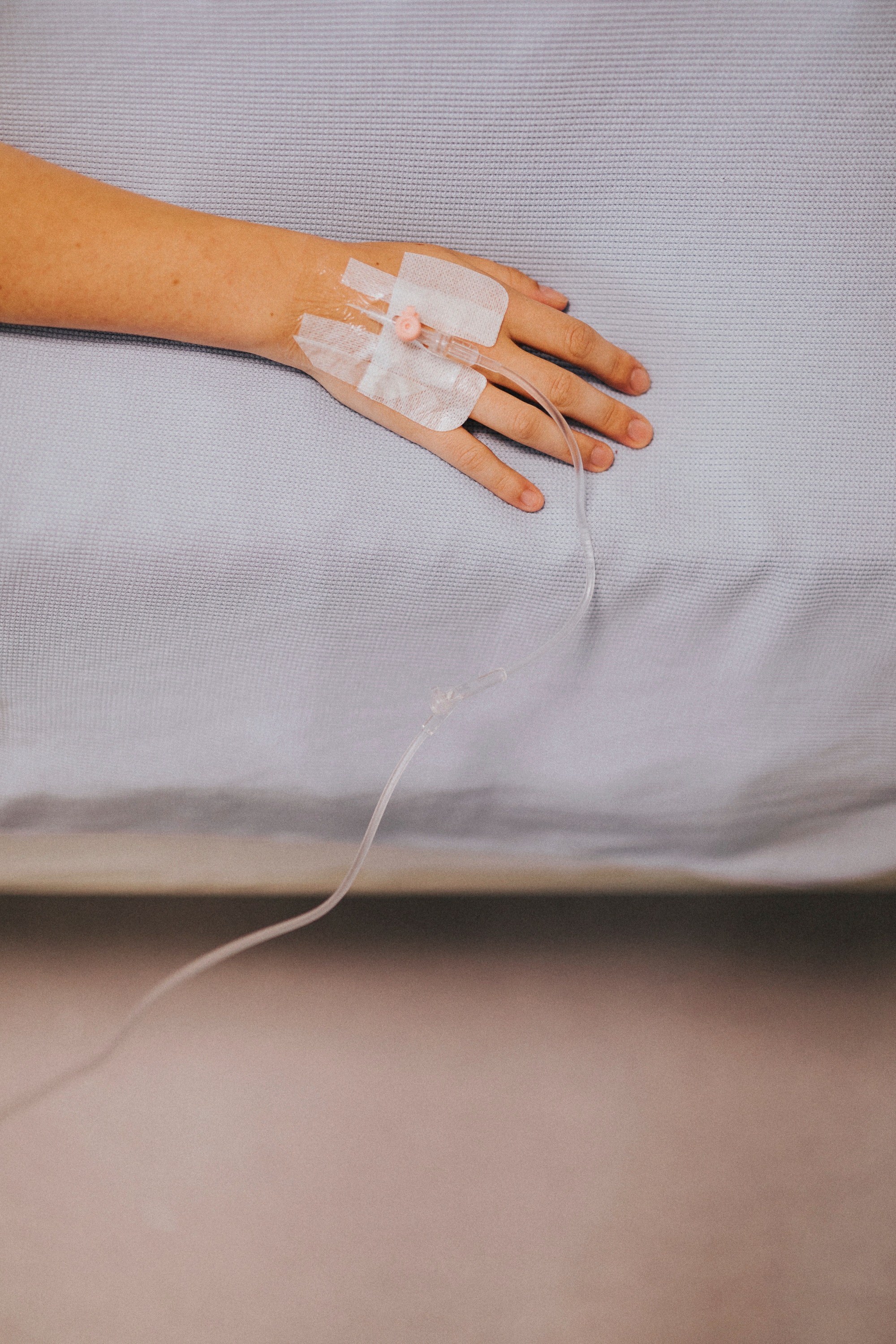
Ketamine Treatment for Mood Disorders is NOT One-Size-Fits-All
Have you suffered from severe depression, suicidal thoughts, social anxiety… or PTSD, OCD, bipolar disorder, addiction… and the treatments your doctor prescribed didn’t help?
Did you reach out to a doctor who offers ketamine, or a ketamine clinic in your area, and find that it hardly helped?
It’s so disappointing.
To put your hope in a new treatment that seems like it could finally make a difference and give you your life back … only to find out it didn’t help any more than anything else you tried — well, that can be shattering. Devastating, really.
I have some thoughts –

It’s true that ketamine treatment doesn’t help everyone reach remission, but it does help most… Still, there may be reasons that it didn’t do as much for you as it could have done. That disappointment you feel just may be remedied…just possibly…. by more effective means of treatment.
Perhaps the provider who administered your ketamine treatments used a route that robs ketamine of its best opportunity to help you.
So here’s a question: Did you receive just a dose or two? Separated by, say, two weeks or more?
Ketamine has been studied long enough to show us that one initial infusion is just that: it’s the first step. And it needs to be followed by others if you’re looking for long-lasting benefits.
It’s been known for some time that the best way to overcome ketamine’s short duration is to stack several infusions together, every 2-3 days. And so far, the best results follow a series of 6 infusions. Over 2 weeks, and now 3. For others, they need 6-8 infusions, maybe even 9… over 3 weeks. And now the numbers start to rumble:
2,2,1,1
3 over 2 weeks
one a week for 4 weeks
two a week for 3 weeks
Geez, is this all just made up? Is there an evidence basis for how we dose and administer ketamine beyond replicating how we administer ECT, or beyond convenience — building a dosing schedule around your driving time, your spouse’s availability, or when you can get a ride? Is there a strong base of evidence for how much or how little to use?
This is where science becomes art. This is what the practice of medicine is.
With IV ketamine, a foundational series of infusions can set in motion changes in the brain structures and systems that can give you the best chance of remission.
For some patients, a few more treatments may be necessary for you to achieve remission…
In other cases, it may be necessary to refresh your remission and bolster it, a few times a year…or once or twice a year.
But in many cases, that remission may remain strong after the initial series — especially if you’re able to strengthen what I like to call the infrastructure of your life.

To reduce stressors by making positive changes.
To work with your therapist to develop productive thoughts and actions in response to daily challenges.
And you may need to receive those refresher infusions periodically while you work on these things.
Researchers are looking at why … and at how many, how often, how high, and how long. We don’t know all the answers yet.
Another consideration is the route your doctor used. Ketamine’s beneficial antidepressant effects are precisely delivered by IV infusion — but it has been delivered an an intramuscular injection, and it can be delivered by inhaler, or swallowed as a bitter liquid, or formulated in an oral lozenge (called a “troche.’)
And now, there are providers out there offering ketamine by “IM infusion.”
An “IM infusion” of ketamine is an oxymoron.
Ketamine was originally developed for anesthesia and to be administered straight into the bloodstream, where 100% of the medicine can reach the brain — where it does its work.
For treatment-resistant psychiatric disorders, we believe this route is especially important.
Any other route – IM (intramuscular), intranasal, oral, sublingual, involves obstacles to the medicine reaching your brain, and a doctor can only estimate the amount that actually reaches your brain. We talked about this in detail in March of 2017.
So…if you’re not getting the full dose of medicine but rather only 50% or even 30%…it’s not hard to see that ketamine could be being shackled from doing its best work. So important.
Why would you risk that?
And there’s another important detail that can rob you of your best results.
The Right Dose of Ketamine for YOU

Every person is unique, every body has its own history, and your brain is unique to you.
Yes, it’s true that a brain is a brain, but yours has its own precise, infinitesimal variations. The systems in your brain are uniquely yours. And this uniqueness must be addressed in your ketamine dose for you to experience the best possible results from your treatment.
This is why we have a personalized, individualized approach to medical care. To customize your treatment to fit you.
We talked about the importance of dose seven months ago, but something new has emerged on the scene. You need to hear about this.
You may have seen the press. A study focused on ketamine dosing (finally!) which revealed two strengths of IV ketamine that provide effective symptom relief in patients with treatment-resistant depression.
Now, keep in mind as we move through this study that the subjects in the study had treatment-resistant depression, specifically. But we know that ketamine is also effective in treating bipolar disorder, panic disorder, social anxiety, PTSD, OCD, addiction … and that it can stop suicidal thinking within just a few hours.
So keep these conditions in mind also as we look at what the researchers found.
Study Finds Two Doses of Ketamine Treatment That Provide Significant Relief of Symptoms
The study, published in Molecular Psychiatry in the October 2018 issue, was led by researchers at Massachusetts General Hospital, and identified 2 doses of IV ketamine that effectively reduced symptoms of treatment-resistant symptoms. Four were tested — two made the cut.

This study investigated 4 dosages of IV ketamine: 0.1mg/kg, 0.2mg/kg, 0.5mg/kg, and 1.0mg/kg.
Now we have a paper that confirms that doses under 0.5 mg/kg are not effective, so hopefully more focus can be devoted to dosages above 0.5 mg/kg.
Such as 0.6, 0.7 or 0.8mg/kg. And may even 1.1 mg/kg and 1.2 mg/kg, too.
Of course we want to use the smallest dose possible that achieves optimum results, but physicians don’t want to administer a dose so small that it can’t achieve relief. And certainly we shouldn’t be cavalier — and provide unnecessarily large doses — when we know that too much ketamine can cause damage.
At the tiny doses we use, however, there’s a wide safety margin.
So back to the study.
What Doses Worked?
The four dosage strengths were tested against an active placebo — which means a non-ketamine medicine that has similar side effects to ketamine. This helped to prevent the study subjects from being able to tell if they got ketamine or not.
The researchers accepted 99 adults with current diagnoses of treatment-resistant depression. These subjects were chosen across 6 different geographical regions, and were involved in the study at 6 different research centers: Massachusetts General Hospital, Baylor College of Medicine/Debakey VA Medical Center, Icahn School of Medicine at Mt. Sinai, Stanford University School of Medicine, University of Texas/Southwestern Medical Center, and Yale University.
A real hall of fame in research centers!
The 99 participants were divided randomly into 5 groups — a group for each dose and one for the active placebo group.

Each participant was assessed with a series of standard depression rating scales on the first day of the infusion study with a series of questions about their symptoms at that time — to established a baseline for each person.
Then they were assessed again on the second day, the third, the fifth, the seventh, the 14th, and 30th day after that infusion. Other assessment instruments determined their mood and suicidal thinking.
Because this was a study, the goal was to check which dose was most effective and lasted the longest. (It wasn’t designed to be a dose-titration study to help participants achieve remission.)
So they were only given one infusion.
Turned out the participants receiving ketamine enjoyed substantially higher symptom improvement the first 3 days according to the depression scale, than those who received the active placebo.
When they compared the 4 dosage groups, those who received the 0.5 mg/kg and 1 mg/kg were the only ones who showed significantly higher symptom relief. This symptom relief lasted 3 days then began to diminish. After 5 days, the antidepressant benefits were gone.
And Ketamine Treatment Research Continues
This is great information. And this study shows us that there needs to be more investigation of ketamine dosing — like maybe between 0.5 mg/kg and 1 mg/kg? Don’t you think?

It also gives us yet another reminder about why most ketamine experts administer a short series of ketamine infusions when you begin treatment. We don’t want your antidepressant benefits to decline, we want them to build. And right now the best evidence we have shows that it seems to require several infusions in a row.
If you’ve been struggling with a disorder that stubbornly resists treatment, or if you’ve had ketamine administered in a way that was less than ideal like we’ve mentioned here, give us a call. What’s important is that you achieve the very best possible relief from your symptoms.
Let’s put ketamine treatment on notice for your life. You need to enjoy living again.
You really can feel better, function better, live better. It’s possible for you to enjoy like you haven’t in years, and discover motivation and initiative to accomplish what’s important to you.

To the resurrection of your best self,

Lori Calabrese, MD
Lori,
This is great information and you present it so well. I think your affirmation of individually tailored dosing is particularly important. Too often, inexperienced practitioners underdose, causing patients to conclude that ketamine will not work for them. This is sad and can have tragic consequences.
Do you provide oral treatment and do you do telemedicine?
We do not provide oral treatment, but we do offer telemedicine consults for ketamine treatment and ongoing telemedicine for our current patients.
I have had 3 Iv Ketamine infusion treatments. I stopped after 3 due to money issues. I was feeling great after 2nd treatment. Now after 4 weeks I’m back to where I started. But I have lozenges now however they don’t seem to work. I’m not sure what to do now as I sink into depression once again.
I am sure this is such a disappointment! Although I can’t offer individual medical advice here, you should know that dose in a lozenge that can actually be absorbed by the body is much lower than the dose you probably received through an IV infusion, and it varies even from lozenge session to lozenge session depending on how long you can hold the lozenge while it dissolves. Please reach out to the doctor you saw for infusions to get the exact dose in mg or in mg/kg, ask them to translate that into what you might need with a lozenge, and if the same doctor is providing lozenges, or another one is, they should be able to work with you to optimize your lozenge dose and hopefully, optimize your response. Best wishes!